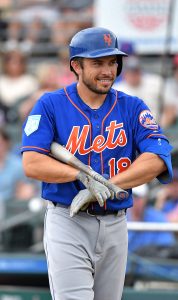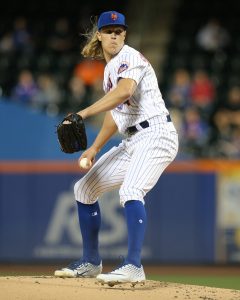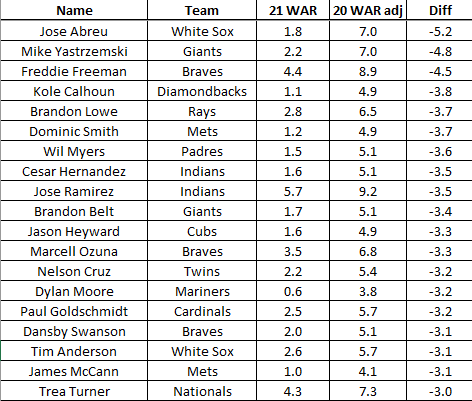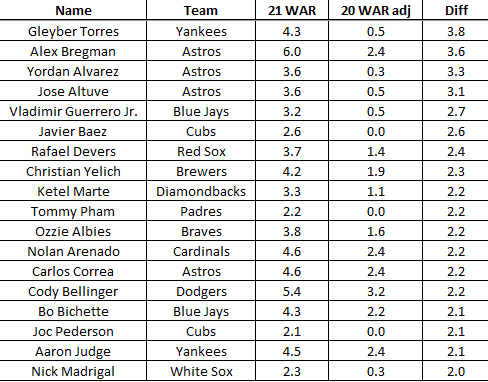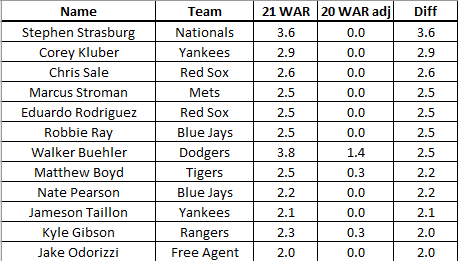A bad bullpen can play a major role in destroying a team’s playoff hopes, as we saw with last year’s Phillies. They finished a game behind the National League’s lowest-seeded playoff team, in part because their relief pitchers could not perform. Here’s how the Phillies and the game’s other four worst bullpens from 2020 (based on ERA) have tried to improve themselves since last season ended….
Phillies (7.06 ERA, 13.1 K-BB percentage):
- The Phillies might have broken their playoff drought last year if not for a bullpen that didn’t get much high-end production out of any of its regulars. New Phillies president of baseball operations Dave Dombrowski and general manager Sam Fuld have gone to work to better the unit, having added several veterans – Archie Bradley, Jose Alvarado, Brandon Kintzler, Tony Watson, Chase Anderson, Hector Rondon, Neftali Feliz and Sam Coonrod, to name some – early in their regime. Some of those players aren’t on guaranteed contracts and will have to fight for spots this spring, but there’s no shortage of experience or success among most of the group.
Rockies (6.77 ERA, 8.8 K-BB percentage):
- Daniel Bard earned NL Comeback Player of the Year honors as a member of the Rockies, and Yency Almonte also put together a very good 2020. They’ll stick around this season, though no other returning Rockies relievers recorded good numbers over a solid amount of innings last year. There is some potential for the team’s bullpen production to get better in 2021, though. Mychal Givens, who has typically been a quality reliever, struggled in a mere 9 1/3 innings last season; Carlos Estevez, one of the Rockies’ most reliable relievers in 2019, put up an ERA north of 7.00 in 24 frames; and newcomer Robert Stephenson, whom the Rox acquired from the Reds earlier this offseason, was effective two years ago before falling off a cliff in 2020.
Mariners (5.92 ERA, 7.8 K-BB percentage):
- In light of last year’s issues, general manager Jerry Dipoto came into the offseason saying he wanted three to four new relievers. True to his word, Dipoto added to the Mariners’ relief corps with the likes of Rafael Montero, Keynan Middleton and Will Vest (Rule 5 pick), though the team can’t necessarily count on anyone from that group to fix its issues in 2021.
Red Sox (5.79 ERA, 13.2 K-BB percentage):
- The Red Sox made an unexpected trade with the enemy Yankees when they acquired righty Adam Ottavino from New York in a January salary dump. Ottavino, who will count $9MM against Boston’s luxury-tax bill in 2021, had a rough time last season, but the 35-year-old has typically been a solid option. Along with Ottavino, Hirokazu Sawamura (a former Nippon Professional Baseball hurler whom the Red Sox signed for a two-year, $3MM deal), Matt Andriese and Rule 5 selection Garrett Whitlock are newcomers to the group.
Marlins (5.50 ERA, 6.7 K-BB percentage):
- No bullpen had a lower K-BB percentage in 2020 than the Marlins, who have made a legitimate effort to better their late-game situation since then. They cut ties with Kintzler, but they’ve added Anthony Bass, Dylan Floro, Ross Detwiler, Adam Cimber, John Curtiss and Rule 5 pick Paul Campbell. They’re also bringing back Yimi Garcia, Richard Bleier and James Hoyt, who each helped the Marlins’ cause in 2020.

